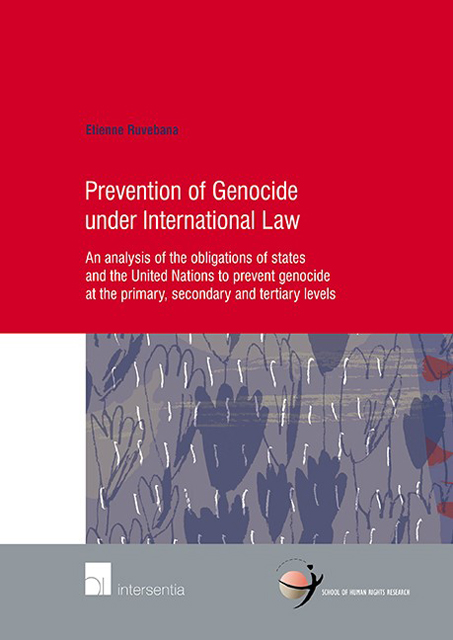 Prevention of Genocide Under International Law
Prevention of Genocide Under International Law Published online by Cambridge University Press: 24 November 2022
INTRODUCTION
In the previous chapter, it was concluded from the fields examined that prevention is a continuous process that is aimed at avoiding the occurrence of something harmful by tackling the causes of the harm prior to it and at each phase of the process to its occurrence and after. It is now time to examine in this chapter whether this understanding is the same for the prevention of genocide and if so to show what may be needed to destabilize the process to genocide in order to prevent genocide. In fact, it would be a capital mistake to try to discuss the prevention of genocide before showing the process through which it passes before it is committed. Taking into account the sources and contributions from other disciplines than law, it is essential to determine the existence of factors in the process to genocide. In doing so, the theories will be confronted with the reality of genocide on the ground, in order to leave the confinement in the abstract and understand what can (or is to) be done concretely to prevent genocide. This means that the factors as well as phases in the process to genocide will be taken into consideration in attempting to show when the prevention of genocide is needed.
As generally known, genocide is not something that happens overnight. For genocide to happen there is a number of factors that precede and make possible the actual genocide. They create the conditions or the opportunity for genocide to occur. Hence, for it to be prevented, one needs first to understand the whole process to genocide from the early stage until the end. This is not to say however that this chapter will be able to give a linear process identical to all genocides, but with some examples, the explanation on common factors and phases of genocide will serve as a good basis to understand the phenomenon of its prevention. For this reason, the first section explains the factors in the process to genocide. The second section summarises the phases in the process to genocide (confronting them to the realities on the ground).
To save this book to your Kindle, first ensure [email protected] is added to your Approved Personal Document E-mail List under your Personal Document Settings on the Manage Your Content and Devices page of your Amazon account. Then enter the ‘name’ part of your Kindle email address below. Find out more about saving to your Kindle.
Note you can select to save to either the @free.kindle.com or @kindle.com variations. ‘@free.kindle.com’ emails are free but can only be saved to your device when it is connected to wi-fi. ‘@kindle.com’ emails can be delivered even when you are not connected to wi-fi, but note that service fees apply.
Find out more about the Kindle Personal Document Service.
To save content items to your account, please confirm that you agree to abide by our usage policies. If this is the first time you use this feature, you will be asked to authorise Cambridge Core to connect with your account. Find out more about saving content to Dropbox.
To save content items to your account, please confirm that you agree to abide by our usage policies. If this is the first time you use this feature, you will be asked to authorise Cambridge Core to connect with your account. Find out more about saving content to Google Drive.